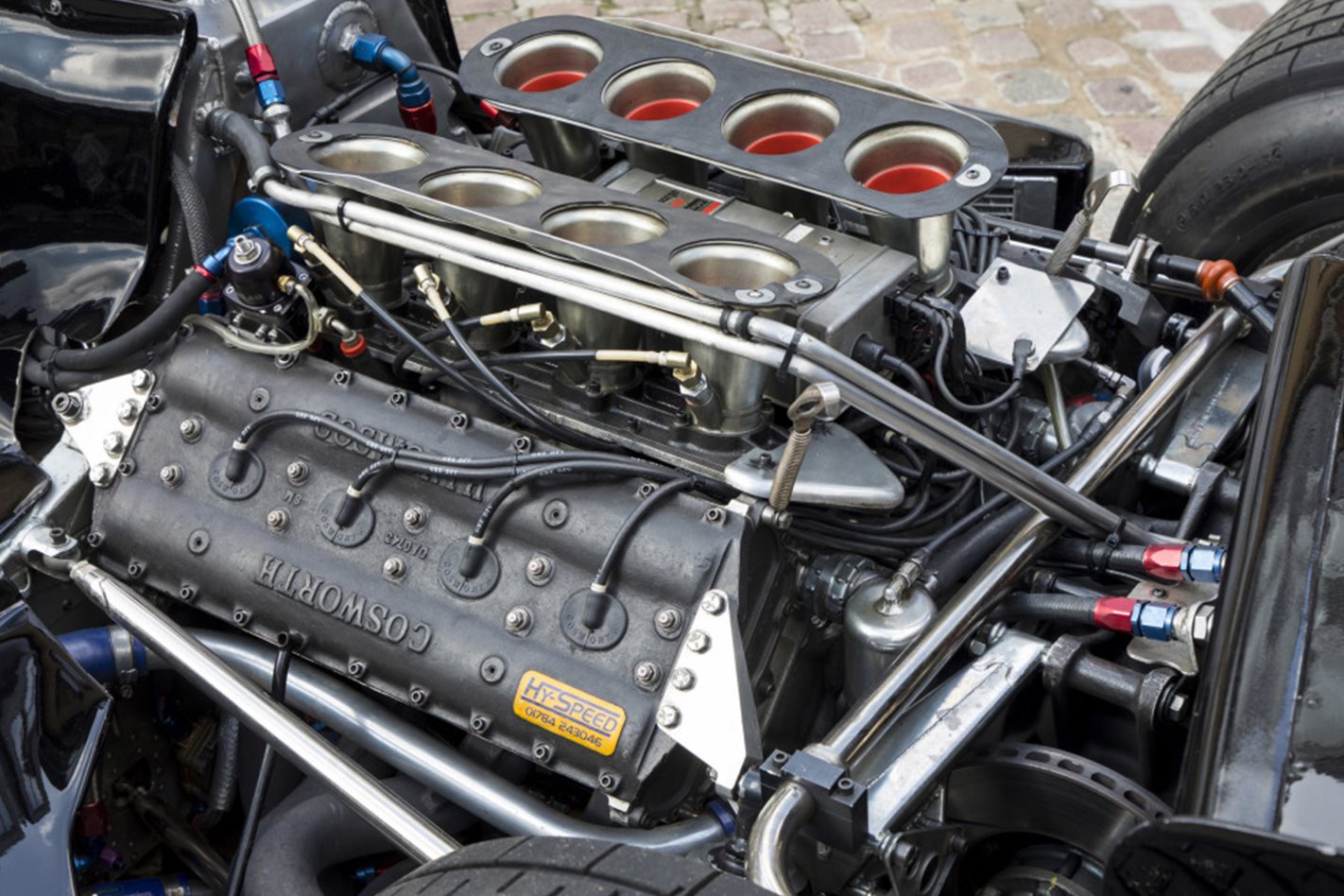Cosworth’s 3.0-litre V8 was a revolutionary engine that dominated Formula 1 for over a decade, and was the brilliant antidote to a radical car design theory from Lotus founder Colin Chapman.
During the early ‘60s, regulations for F1 were changing and the then-current 1.5-litre engine was to be replaced with a larger 3.0-litre capacity. Lotus was supplied engines from Coventry Climax at that point but the engine builder was not interested in developing a larger engine to meet the new rules. Chapman went to see his ex-gearbox engineer Keith Duckworth, who had founded a fledgling automotive business with Mike Costin named Cosworth.
But Chapman did not just want a normal engine, he wanted a block that could form a structural part of the car; that is, suspension components would bolt straight onto the block that was connected to the chassis. It was radical thinking, and required a solution that would take into consideration heat from the engine affecting how the suspension might react. Duckworth was sure he could build a race engine to suit and it would cost £100,000; Lotus, which had a close relationship with Ford, successfully lobbied the Blue Oval to help fund the F1 motor and by 1967 it was complete.
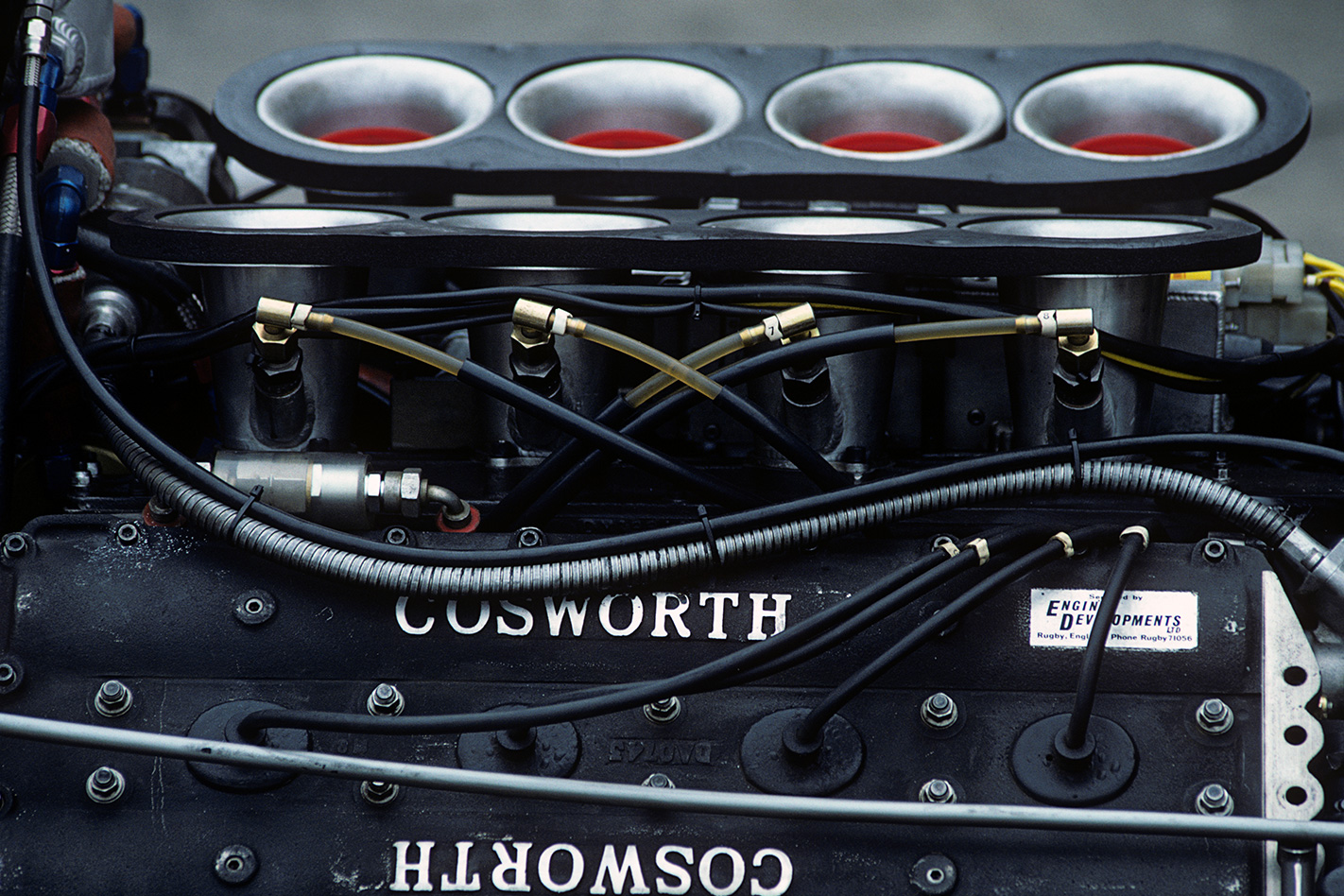
The resulting engine, designed by Duckworth, was mostly based on the Four Valve series A (FVA) engine used in Formula 2 racing, which itself was based on the Ford Cortina road car engine.
It was in the early months of that year, when the championship was already two races in, that Lotus would first test the Type 49 race car with Cosworth’s motor. But it completed only a few laps in the hands of drivers Graham Hill and Jim Clark before being put on a truck to Holland where it would debut at the Dutch Grand Prix.
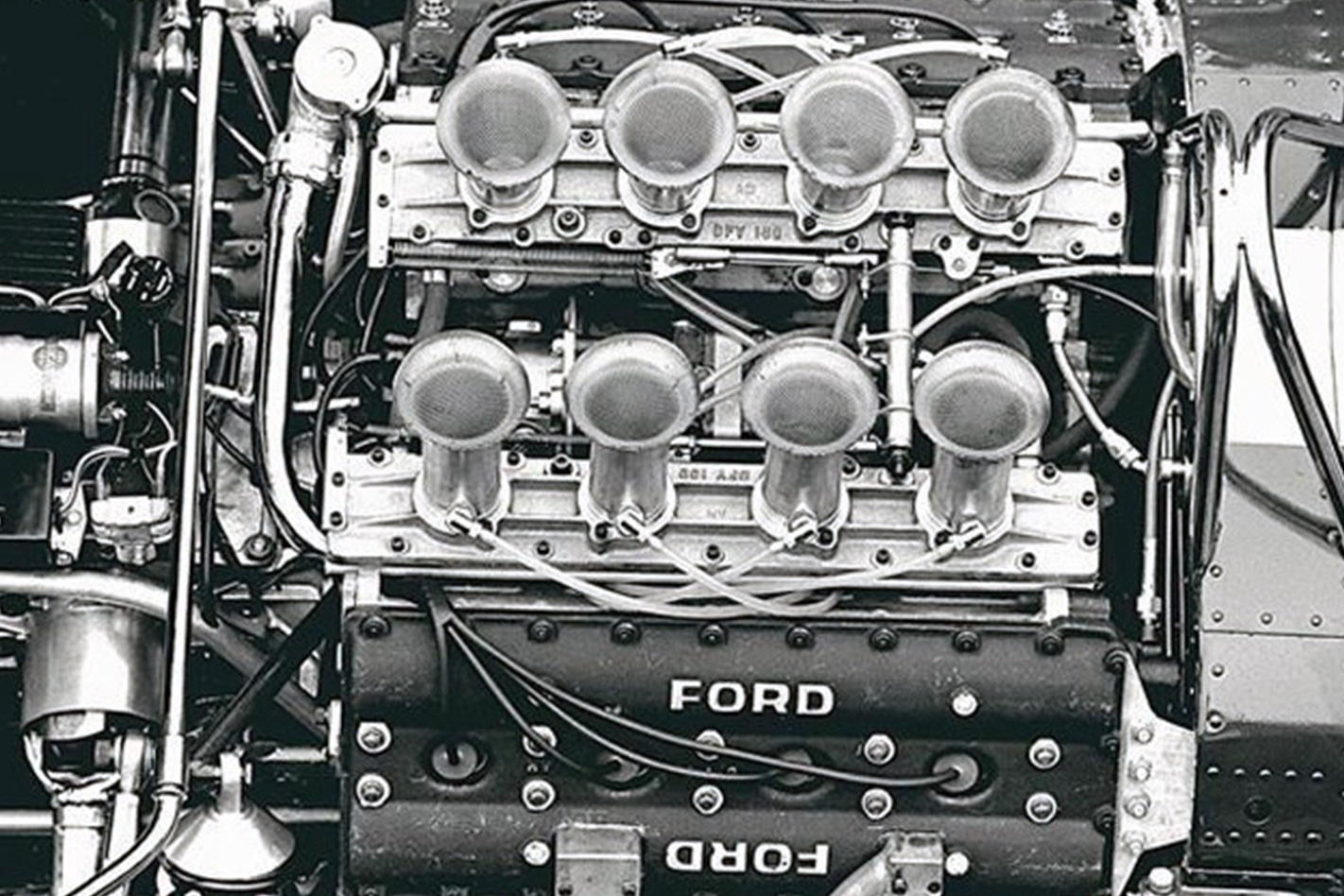
Arriving at Zandvoort, the Lotus 49’s first appearance was about as special as a radical new F1 car from McLaren appearing three races into the season with a Ferrari engine now. In qualifying, despite limited wheel time and complaining of the engine’s sudden burst of power up the rev range, Hill qualified on pole though did not go on to finish the race due to engine problems. Instead, teammate Clark, who started down the grid, went on to enjoy a comfortable win. But mechanical problems hindered the powerful Cosworth DFV all season – spark plug failures, vibrations and oil pooling in the head were culprits that cost Lotus the 1967 championship.
By the start of the 1968 season, Lotus and Cosworth had perfected the motor’s design and went on to win the championship. It was the first of 12 drivers’ and 10 constructors’ championships that the DFV would record – the greatest of any engine to ever grace F1. After its sterling performance, Ford commercialised the opportunity by supplying the engine to other teams, and it became the most popular engine on the grid.
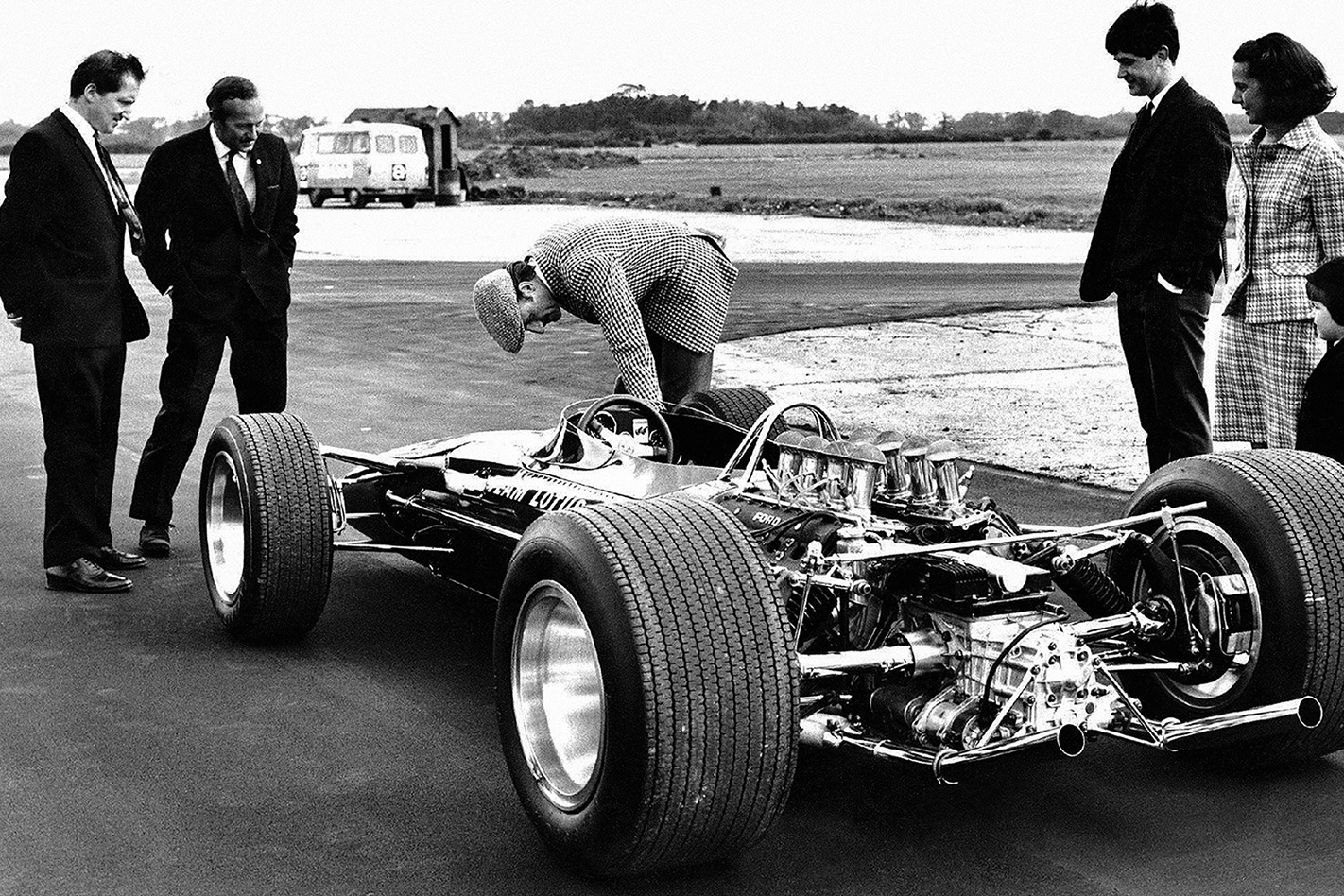
Cosworth’s Double Four Valve was quickly known as the DFV – a water-cooled 2993cc capacity, 90-degree V8 engine with double overhead cams and four valves per cylinder, made up from a total of 3550 parts. Because the engine was wider than other engines, it required different packaging, with the fuel tank located in front of the engine which only served to enhance balance and handling.
On debut in 1967 it produced 304kW at 9000rpm; at its height in 1977 it produced 347kW at 10,500rpm. Chasing higher output, the engine could be allowed to spin at higher revolutions for a limited time, but at over 10,500rpm – toward the 11,200rpm absolute limit that developed 380kw – one of the eight pistons is stationary at bottom dead centre of the stroke, with 230g of forces on the rod enough to destroy the engine quickly. It had reached maximum output.
However, the Cosworth enjoyed years of dominance and is regarded as a pioneer of F1 along with Chapman’s radical design which integrated the engine as a stressed member of the chassis. The design principle carries through to today’s F1 machines.
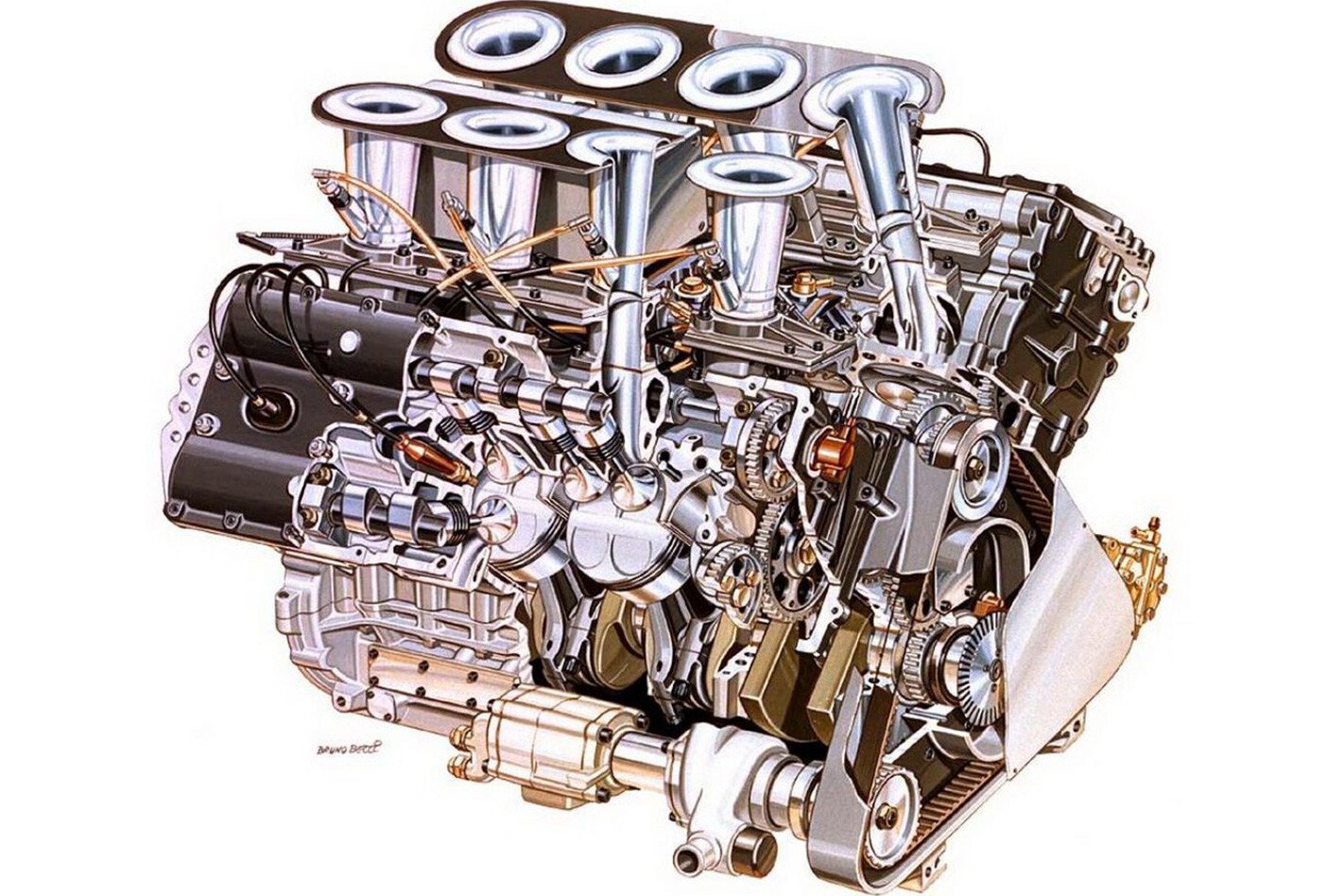
The Cosworth DFV had its last win in 1983, before the turbo era regulations were introduced, and had its last race in 1985 – though it will never be forgotten in racing and engine lore.
| Manufacturer | Cosworth |
| Production | 1967-1985 |
| Configuration | 90u00b0 V8 |
| Bore x Stroke | 85.674 x 64.8mm |
| Displacement | 2993 cc |
| Valvetrain | DOHC four valves per cylinder |
| Power | 304-380kW |
| Torque | 332Nm (1967) |
Click here to read more Wheels features on Great V8s.

